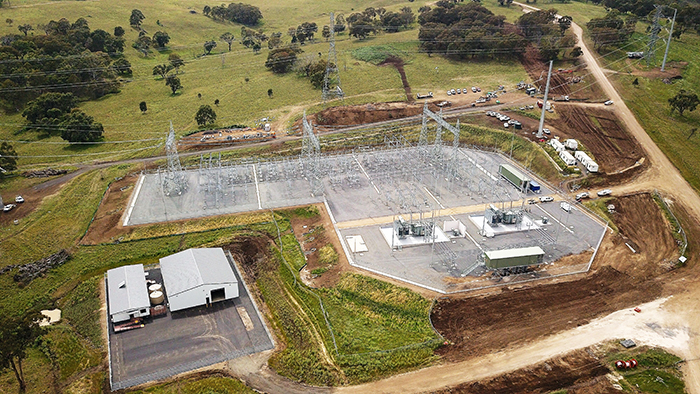Connecting new energy sources to the grid


As the largest wind farm in New South Wales, the 270MW Sapphire Wind Farm will provide enough clean energy to power around 115,000 homes. Connecting renewable projects to the grid is a complex yet crucial process that requires specialist network and electrical knowledge. Zinfra is one of the contractors that has helped bring this large-scale renewable energy project to life, using its experience and expertise in the power sector to facilitate grid connection, while pulling out all the stops to help meet tight targets.
Zinfra was engaged to construct a 330/33kV substation and carry out associated 330kV line works to connect the new wind farm to TransGrid’s existing 330kV 8E SA Armidale-Dumaresq transmission line.
The scope of the works included limited design, balance of procurement, bulk earthworks, detailed civil works, electrical works, testing, commissioning and training of staff.
Zinfra was granted possession of the site in January 2017, with energisation of the substation taking place on 28 November 2017.
Practical completion was declared on 1 December 2017, with the project completed on schedule and on budget, well in advance of the energisation of the wind farm’s collector cables.
“The greatest highlight of this project was that it was delivered within a 10 month construction timeframe that included over a month of inclement weather experienced during the bulk earthworks phase. This is an exceptional result for a scope of works of this magnitude and a testament to Zinfra’s capabilities,” Zinfra Site Engineer, Luke Perabo, said.
The main challenge Zinfra faced was the successful delivery of a quality build within a constrained program, which required meticulous planning, monitoring and support to ensure resources, plant and deliveries were organised to avoid disruption to the program.
“A prime example of this planning was apparent through innovative scheduling. One innovation was where we targeted specific civil works such as the construction of the cable trenches and areas for foundations for primary plant. By targeting specific areas such as these, it allowed us to install the multicores and terminate them in the circuit breakers, current transformers etc prior to the cable trenches being completed. This also allowed us to bring in the Testing & Commissioning resources to start testing early,” Mr Perabo said.
“Furthermore, during the peak of the electrical works, additional resources were mobilised from Zinfra’s New South Wales and Queensland Power Divisions and divided into three crews on rotating rosters to ensure continuity of works.
“Consequently, this approach had its own challenges including an increased number of personnel (up to 70 persons on-site during peak construction) and work activities exposed to plant interactions.
“These challenges were well managed by Zinfra, who maintained effective communication amongst all site staff, established clear interfaces and protocols, and strategically allocated tasks to minimise interaction.”
A collaborative partnership between Zinfra and the client, TransGrid, was established early on in the project to ensure project outcomes. This collaborative approach fed down the project structure to site level and communication between TransGrid and Zinfra was very well regarded.
“Effective communication and a collaborative relationship was also established with the head client and balance of plant contractor for the wind farm through regular interface meetings, which both Zinfra and TransGrid representatives attended,” Mr Perabo said.
“Interface issues with the balance of plant contractor were identified early on and mechanisms were implemented to minimise impacts to both parties’ respective construction works.
“Throughout the project the safety of all personnel was held paramount. In particular, during the construction phase a safety culture was fostered by the site management team with the appointment of a full time Safety Advisor. Also, a key focus was placed on fatigue management due to the remote location of the site and working hours.”
A high standard of quality was enforced through the entirety of the project. This was promoted by Zinfra’s experienced Civil and Electrical Inspectors and supported by the comprehensive, tailor-made suite of inspection and test plans (ITPs)/inspection and check sheets (ITCs) developed in-house specifically for the project.
Mr Perabo said that this project is an excellent reflection of Zinfra's capabilities in the growing renewables space.
“The success of this project is another clear illustration of Zinfra’s expertise and capability to continue to deliver high quality EHV substation and transmission line jobs on time, whilst fostering a safe working environment for their personnel.
“The growing renewable energy market presents an exciting opportunity for Zinfra, in accommodating these new sources of generation and new customer connections requiring substation and transmission line works.”